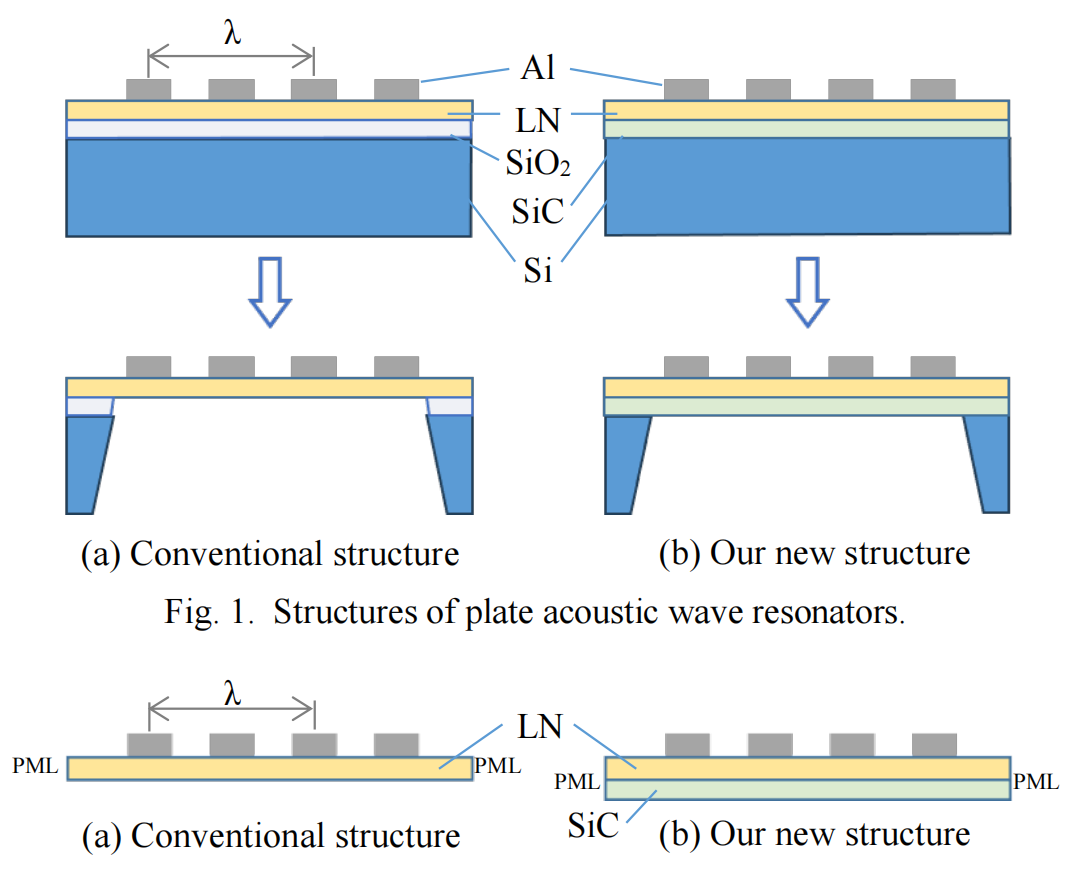Paper Download

OMedaSemi can provide diverse composite X-o-X Wafer, we use surface actived bonding technology to bond diverse material . you can click this page to know our composite wafer and our surface actived bonding technology

The article **"Analysis of Plate Acoustic Waves Resonance Properties Using Thin Plate of LiNbO₃/SiC"** investigates the resonance characteristics of plate acoustic wave (PAW) resonators with a new structure aimed at improving strength and heat dissipation for 5G and beyond communication systems.
### Key Points:
1. **Objective**:
- The study proposes a new PAW resonator structure where a thin layer of silicon carbide (SiC) is bonded to the bottom of a lithium niobate (LiNbO₃, LN) thin film. The SiC layer is intended to enhance the mechanical strength and heat dissipation without significantly compromising performance.

2. **Challenges**:
- Conventional plate wave resonators, which feature free surfaces on both sides of a piezoelectric film, suffer from strength and heat dissipation issues, limiting their practical applications despite their superior performance.
3. **Methodology**:
- The researchers performed simulations using finite element method (FEM) to analyze the resonance properties of the new PAW structure.
- The study focused on two modes: SH0 (shear-horizontal) and S0 (symmetric) plate wave modes.
- They varied the thickness of LiNbO₃, SiC, and aluminum electrodes (interdigital transducers, IDTs) to determine the optimal configuration for high electromechanical coupling coefficient (Keff²), phase velocity (Vp), and resonance frequency (fr).
4. **Key Findings**:
- **SH0 Mode**:
- The proposed structure with SiC achieved a phase velocity approximately 1.4 times higher than conventional LiNbO₃-only structures.
- Keff² decreased slightly with the addition of SiC but remained above 25%, making the structure viable for high-performance resonators.
- The optimal SiC thickness was determined to be around 0.12λ.
- **S0 Mode**:
- The new structure also showed improved performance in the S0 mode, with a 1.4x increase in phase velocity and a Keff² of over 20%.
- Spurious responses were observed, suggesting further optimization is needed to reduce these unwanted signals.
5. **Conclusions**:
- The bonding of a SiC layer to the bottom of a LiNbO₃ thin plate improves both phase velocity and heat dissipation without drastically reducing the coupling coefficient.
- The proposed PAW resonator structure is a promising candidate for high-performance RF filters, potentially outperforming traditional SAW devices.
- Future work will focus on further optimization, including temperature coefficient of frequency (TCF) and heat dissipation analysis.
This research highlights a novel approach to improving the practical implementation of plate acoustic wave devices for modern communication systems, addressing the key limitations of conventional resonator designs【23†source】.
OMeda (Shanghai Omedasemi Co.,Ltd) was founded in 2021 by 3 doctors with more than 10 years of experience in nanpfabrication. It currently has 15 employees and has rich experience in nanofabrication (coating, lithography, etching, two-photon printing, bonding) and other processes. We support nanofabrication of 4/6/8-inch wafers.